As shown in the model, two MOSFETs are employed for converting DC to AC to be fed into the transformer. Why would we need a second one when a single MOSFET could handle the entire voltage?
3 Answers
Let's replace the upper MOSFET with a short. On first glance, it appears that the converter will still work. Its primary side will now look like this:

simulate this circuit – Schematic created using CircuitLab
This configuration has a huge problem, unfortunately: The transformer's core will saturate and the converter will immediately fail (explosively).
The reason for this is transformer demagnetization (or lack thereof). Let's assume the input voltage is 12V, the operating frequency is 500kHz, the duty cycle is at 50% and the diode's forward-voltage is 1V. That results in an on-time of 1µs. This means that during one on-phase, the transformer's primary inductance sees 12µVs (micro volt-seconds). This charges the core up with a certain magnetic energy. During the off-phase, the diode allows at most -1V across the primary winding. We have to take the energy that we put into the core back out of it again, which means that we must now apply -12µVs to the primary. This requires an off-time of 12µs. However, due to our 500kHz switching frequency, we only have 1µs of off-time. This means that we can't remove all the magnetic energy from the core anymore. During each switching cycle, more energy will accumulate, until the core saturates and the transformer stops functioning. The transformer will then turn into a short-circuit (as it loses its inductance) and blow up the switching MOSFET.
We can also analyze this in a different, possibly more intuitive way: During the on-phase, we apply 12V to the transformer. During the off-phase, we apply -1V (clamped by the diode). Since the on-phase and off-phase are equal in length (50% duty cycle), the average voltage across the primary is (12V-1V)/2 = 5.5V. That means we're applying a DC voltage to the transformer! It should go without saying that transformers really don't like it when you apply DC to them. The result is, again, kaboom.
The second diode and MOSFET allow a higher reverse voltage: The transformer's primary can swing between 12V and -12V (or, more generally, +VCC and -VCC), which allows a net zero DC voltage across the primary at duty cycles at or below 50%. Any energy put into the transformer's magnetizing inductance can get out again, too, and the transformer is happy. No kaboom.
You can indeed build an isolated converter with only a single switch, but it will either have to be a flyback converter (boost-derived topology) instead of a forward converter (buck-derived), or you'll have to add a second demagnetizing winding to the transformer of your single-switch forward converter, which provides a way for the accumulated energy to leave the core again during each cycle. Forward converters can generally handle higher power than flybacks (because flybacks are very sensitive to stray inductance).
This is what a working single-switch forward converter would look like:

The additional winding allows for a higher clamping voltage (equal to -VCC) during the off-phase and recycles the energy stored in the transformer's core back into the primary-side supply voltage rail. This avoids saturation of the core. It does, however, require a more complex transformer. In practice, both designs are frequently used (two-switch version with a single primary, or the single-switch version with two primary windings).
Contrary to what's being said in the comments, the transformer saturation happens at any load current. A higher load will not prevent the transformer from saturating. A quick Spice simulation shows this immediately - the primary magnetizing current rises without bound. The rate at which the primary current increases is also completely independent of the load (as expected).
- 14,865
- 28
- 50
-
2A forward converter can be done with a single switch, as long as there's enough load on the output to keep the transformer from saturating. (A snubber is still required, to deal with leakage inductance that doesn't couple to the secondary, but this is a comparatively small amount of energy). See [this white paper from Infineon](https://www.mouser.com/pdfdocs/2-10.pdf), for instance. – Hearth Nov 24 '22 at 22:04
-
The two-transistor types are more common, I believe (though I've never seen the type shown in the question; usually active-clamp forwards work a bit differently), but a single transistor one isn't impossible--it doesn't *have* to be a flyback. – Hearth Nov 24 '22 at 22:05
-
1The 2-switch forward converter is a very robust converter and was popular in multi-output ATX power supplies years ago. Its single-switch version is a classic and found in applications up to a few hundred watts, mainly low voltage and high current dc-dc converters. The 2-switch flyback also exist and is well suited for very high input voltages but it's not a very popular structure unlike its single-switch version that you find in the majority of line-powered consumer products below 100 W. – Verbal Kint Nov 25 '22 at 06:30
-
1The kaboom would only occur if you ran the converter with little or no load on the secondary yet at a 50% duty cycle. This basically means all the energy pumped into the core gets converted to heat in the primary and the diode (so the circuit is a space heater, not a power supply). That's not too common unless there's no feedback at all. Normally, the duty cycle without load would drop way down to a few percent, higher duty cycles would only be used when the secondary is draining most of the energy from the core. – TooTea Nov 25 '22 at 10:55
-
@Hearth I feel there's a slight misunderstanding here - core saturation will occur independent of the load applied to the converter. A two-switch (or single-switch) forward converter can *not* transfer any of the energy from its magnetizing inductance to the output (the free-wheeling voltage has the wrong polarity for that). If you draw the equivalent schematic of the transformer (magnetizing inductance + ideal transformer + stray inductance), you will immediately see why that is the case - the magnetizing inductance is in parallel to the ideal transformer and will always see the DC voltage. – Jonathan S. Nov 25 '22 at 14:08
-
I don't like this explanation because it uses a straw man; the correct comparison is the 1-switch forward with either a reset winding (the diode isn't antiparallel with the load, but placed on a separate winding) or a reset network (clamp snubber). The question, why 2-switch vs. 1, then is left unanswered. – Tim Williams Nov 25 '22 at 17:39
Why would we need a second one when a single MOSFET could handle the entire voltage?
- A single MOSFET (used to implement a flyback converter) has to handle more than the DC voltage of the primary power supply. Depending on the turns ratio and depending on the output voltage on the secondary, it may have to handle typically up to twice the supply voltage
- A single MOSFET (flyback converter) does not produce a regulated voltage under light load conditions and, to achieve output voltage regulation, pulse width modulation is required (an added complication).
- On the other hand a dual MOSFET, dual diode primary automatically puts plus 50 volts across the primary in one half of the cycle and, during the 2nd half, the diodes reverse this to minus 50 volts. In other words the transformer is driven on the primary with a fixed amplitude square wave and this naturally produces fixed amplitude on the secondary. It's like a conventional 50/60 Hz transformer on an AC supply. OK it doesn't regulate, but it doesn't do what a flyback converter might do if there wasn't some form of feedback and duty cycle control mechanism to limit the output voltage from becoming crazy values.
- A single MOSFET flyback circuit needs feedback from the output to the PWM control circuit and this might have to cross a galvanically isolated barrier = an added complication requiring an opto-isolator. OK you get the benefit of good output voltage regulation.
- The dual MOSFET circuit doesn't need feedback from the secondary to avoid crazy light-load output voltages but, you don't get very tight voltage regulation.
- 434,556
- 28
- 351
- 777
EMC
Because both ends of the winding swing the same voltage at the same time (hopefully), equal noise currents flow through the primary-secondary capacitance in the transformer.
That is, we can model the primary-secondary isolation by capacitors, from each end of the primary winding, to the secondary side (and likewise for the secondary winding's ends, but it generally has a lower voltage so isn't as significant). When the currents in these capacitors cancel out, common-mode (ground-to-ground) noise is greatly reduced, at the source (the inverter and transformer), without expensive shielding and additional filtering.
The actual capacitance is distributed, and in general it isn't distributed evenly along the windings, it depends how the transformer is wound; but these don't spoil the approximation [C between ends of windings] until higher frequencies where the windings exhibit resonances (i.e. self-capacitance or transmission line effects).
Losses
In the one-switch forward converter, either a clamp snubber, or a reset winding (and catch diode), is necessary. The former completely burns the energy stored in the transformer's magnetizing inductance (which can be quite large (say, 10s of mH), so the current and therefore energy, relatively small*, but not arbitrarily small for other reasons), and the latter is annoying to use and doesn't perform as well as you might think (the leakage inductance between windings may still require snubbing, and the extra winding costs space in the transformer).
Both one-switch types also develop much more voltage on the switching node (approx. twice the supply), wasting a lot of switching energy charging those capacitances (transistor and diode, and between windings of the transformer). Mind, this isn't necessarily a problem, as the two-switch version has half the voltage swing on twice as many semiconductors that are double the capacitance -- no free lunch. But the primary winding can be the same dimensions and therefore capacitance, so some energy is saved there.
To be clear, the two-switch case returns all reset and leakage energy to the supply, without the waste of a clamp snubber, or additional winding (and its leakage, capacitance and resistance). This allows a cheaper transformer to be used (less interleaving, more insulation thickness), lower magnetizing inductance to give faster risetime (more efficient switching), and the lower EMI footprint makes higher \$F_{SW}\$ feasible, increasing power density.
*Note that, while \$ E = 0.5 L I^2\$, we aren't charging the magnetizing inductance to a given current. We're charging it with a given square voltage pulse -- a given flux (Vs). When this is the case, current is inversely proportional to inductance (\$I = \Phi / L \$), and therefore energy is overall inversely proportional as well. This is basically why an ideal transformer (i.e., a coupled inductor intended for instantaneous voltage and current transformation -- power transmission, as opposed to storage of energy) has infinite magnetizing inductance.
- 22,874
- 1
- 20
- 71

